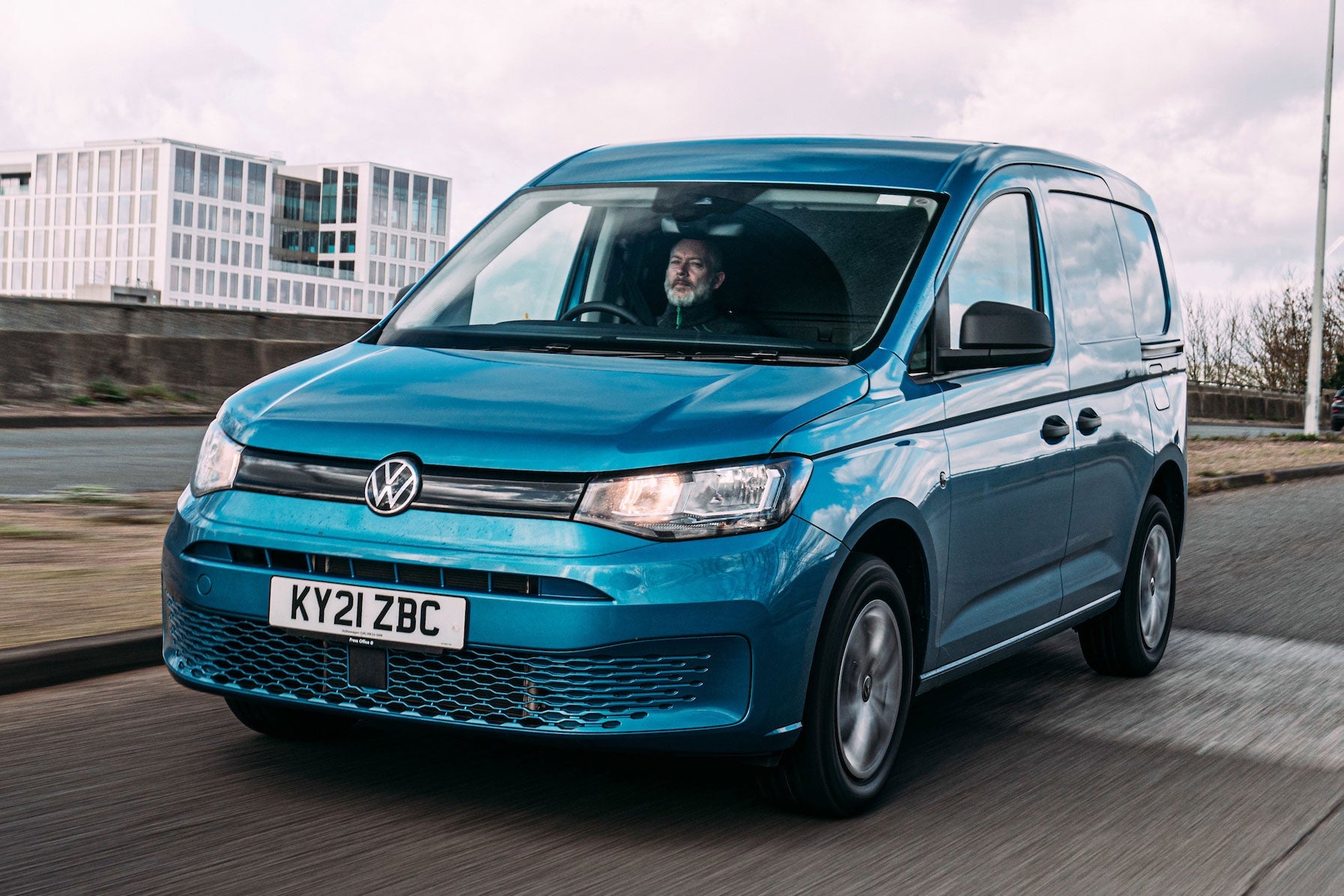Volkswagen Caddy Cargo Review 2025: Price, specs & boot space
Written by Andy Brady
Quick overview
Pros
- Drives like a car with eager handling and soft suspension
- Tech-packed interior is comfortable and stylish
- Bigger load area than the old model
Cons
- Entry-level models are pretty basic
- Payload is poor compared to rivals
- Considerably noisier inside than the Caddy MPV
Overall verdict on the Volkswagen Caddy Cargo
"The Volkswagen Caddy Cargo is more practical than ever before, while its tech-packed and Golf-like cabin is better than anything offered by rival models. The Caddy's biggest let-down is its poor payload, but that won't be a huge consideration for every buyer."
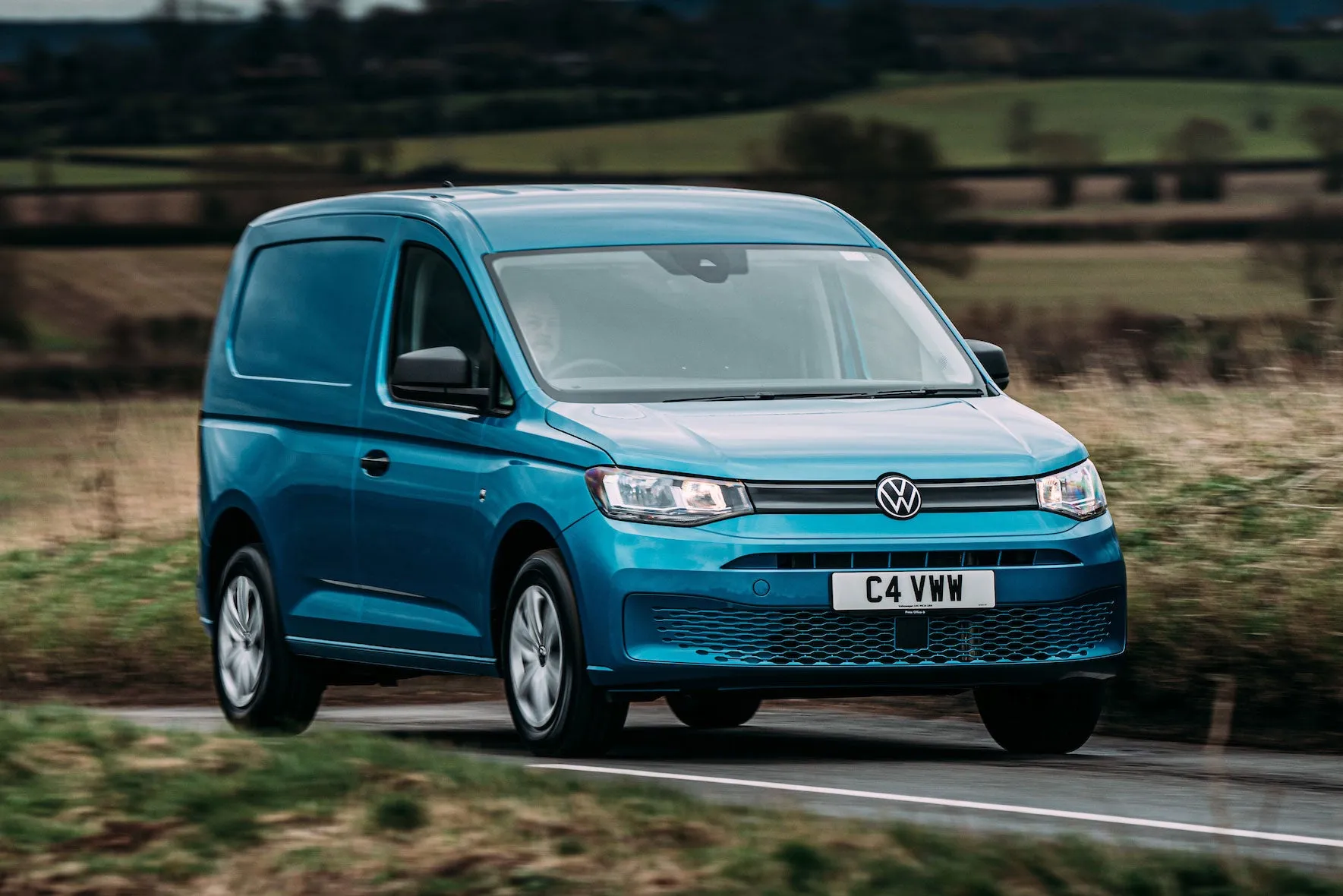
Now in its fifth iteration, this is the first time the Caddy Cargo has been called the Caddy Cargo. Previously it was known simply as the Volkswagen Caddy, while the people-carrier model was badged the Caddy Life. Now the Caddy Life is just the Caddy, while the Caddy van is now the Caddy Cargo.
Confused? Wait until we tell you what the Caddy Cargo has in common with the Audi TT. That's the MQB platform – the oily bits that the Caddy Cargo is based on, which also underpin a whole range of Volkswagen Group cars from the Volkswagen Golf to the Skoda Karoq.
The logic behind this move is that it makes the Caddy Cargo more car-like than ever before, a desirable feature in a small van that's set to compete with the likes of the Ford Transit Connect, Citroen Berlingo, Peugeot Partner and Vauxhall Combo Cargo.
The best compliment we can pay the Volkswagen Caddy is that its cabin feels just like a Volkswagen Golf's. You get a stylish dashboard and comfortable seats with enough support for those who spend all day in their van.
There are three key trim levels: Commerce, Commerce Plus and Commerce Pro. The standard Commerce is a bit basic, but the Commerce Plus will tick all the boxes for the majority of buyers. The Commerce Pro, meanwhile, offers a bit more luxury – but don't expect it to be cheap. You can easily splash more than £30,000 on one of these.
If you're getting the impression that the Caddy's been watered down, you'd be wrong. You get a bigger load bay than in the old model, capable of swallowing Euro pallets whole. And, like before, you can buy the Caddy Cargo in two sizes – the standard length, and the longer Caddy Cargo Maxi.
The majority of Caddy Cargo buyers are likely to go for the 2.0-litre diesel engine which is available with three different power outputs: 75PS, 102PS and 122PS. We've driven the latter, with the seven-speed DSG automatic gearbox and it's got plenty of grunt for shifting whatever it is you need to, errr, shift. You might be better saving money by opting for the mid-range 102PS version, although this is only offered with a six-speed manual gearbox – a shame as the DSG transmission really takes the strain out of day-to-day driving.
There's also a 1.5-litre petrol engine available, intended to appeal to those drivers who spend most of their time in city centres or don't cover many miles each year. Unfortunately, there isn't an electric or hybrid model. There is, however, a 4Motion four-wheel-drive version – ideal for drivers who need to traipse across muddy fields or can't afford to be stuck in bad weather.
In terms of being car-like to drive, the Caddy Cargo ticks that box more so than any of its competitors. The electric power steering means it's a doddle to drive around town while driver-assistance technology poached from the latest Golf is on hand to keep you safe. We don't think you'll find a more car-like van on the market.
And that pretty much sums up the Caddy Cargo. It's more practical than before and more car-like than any of its competitors. Sure, it's not as versatile as the bigger Volkswagen Transporter, but for a van of this size it's impressively practical. It's not cheap – with a new top-spec model listing at more than £30,000 – but you get what you pay for, and the new Caddy Cargo ought to hold its value well.
If you're looking for the people carrier version, you'll need our Volkswagen Caddy review. While if you want the older model, check out our Volkswagen Caddy (2015-2021) review.
Is the Volkswagen Caddy Cargo right for you?
If you don't need the space of a Volkswagen Transporter but need something with a bigger luggage capacity than a car or SUV, the Volkswagen Caddy Cargo is a great choice. It's easy to drive and has a comfortable interior, but don't expect a great deal of plushness from the entry-level model.
What’s the best Volkswagen Caddy Cargo model/engine to choose?
We'd recommend the mid-spec Caddy Cargo Commerce Plus. It strikes a good balance between affordability and car-like comfort, although the base model is fine if you're not too fussed about luxuries. The top-spec Commerce Pro is a very appealing option for its long list of standard equipment, but it soon starts to look expensive – especially if you're paying retail price for a new one.
In terms of engines, most buyers will find the 2.0 TDI is the ideal option in terms of low running costs and plenty of torque. Go for the most powerful one that's within budget – the fuel consumption penalties are negligible. Alternatively, if you're expecting to spend a lot of time in city centres (or simply cover a lot of short journeys), the 1.5 TSI petrol could be a better choice.
What other vans are similar to the Volkswagen Caddy Cargo?
If you're in the market for a small van, you should also be looking at the Citroen Berlingo, Peugeot Partner and Vauxhall Combo Cargo. None of which are as car-like to drive as the Caddy, but do offer a bigger payload for similar money. The Ford Transit Connect is another dependable alternative, but it's now starting to show its age compared to more modern rivals.
Comfort and design: Volkswagen Caddy Cargo interior
"The Caddy Cargo's interior draws heavily on that in the latest Volkswagen Golf. If it wasn't for the standard-fit bulkhead in your rear-view mirror, you could easily think you were driving a car."
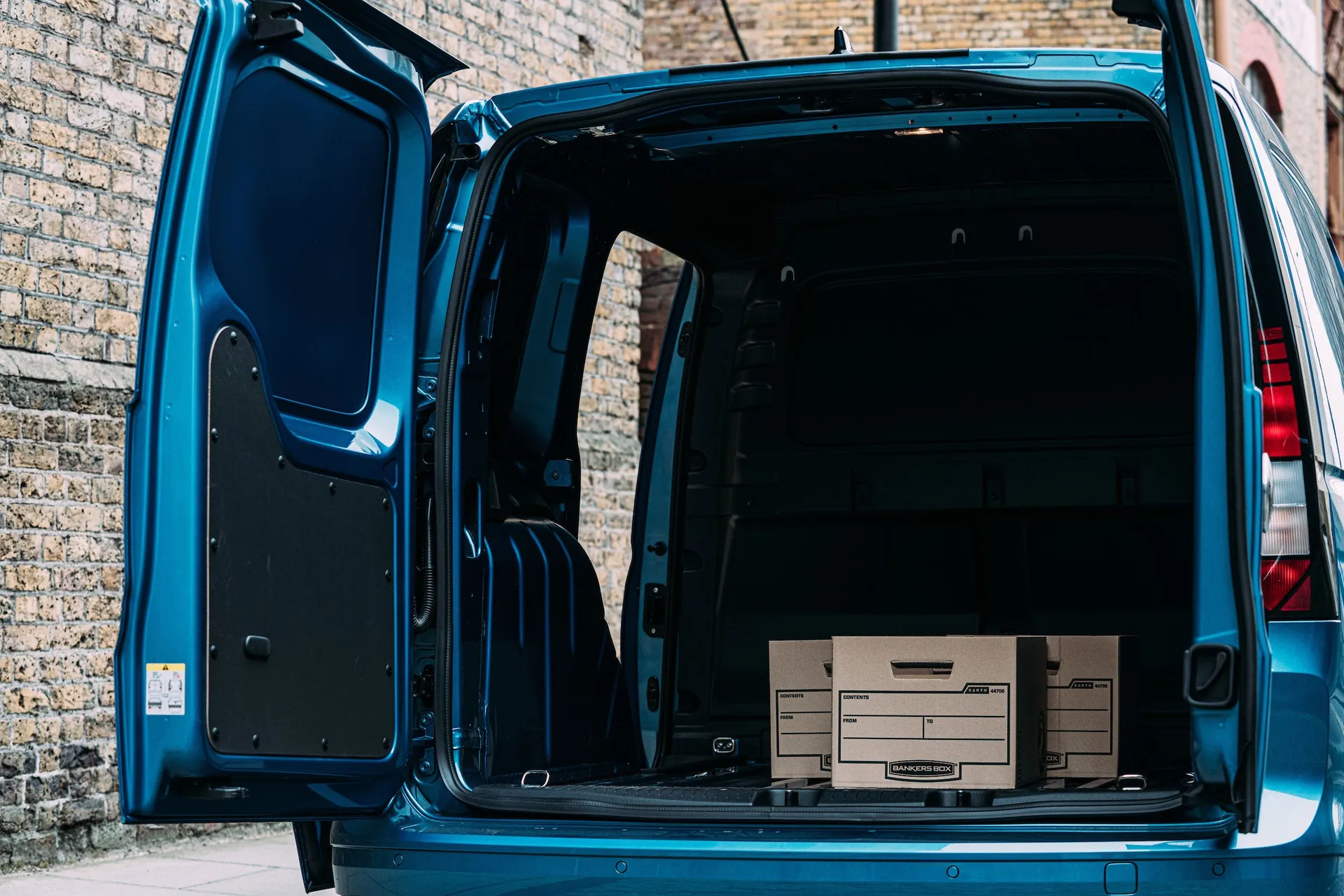
You sit relatively low down for a van (much like most of the Caddy Cargo's competitors), while everything you need to access on a regular basis is within reach. There's a driver's armrest at the very least as standard across most of the range (passengers get one too on the Commerce Pro), while adjustable lumbar support is provided on mid and top-spec models.
One frustration is that you need to navigate through the media system in order to perform simple tasks such as adjusting the temperature of the air conditioning. While this is a bit irritating in a passenger car, it's more annoying in a van you might be driving while wearing gloves or with dirty hands. The optional climate control system comes with touch-sensitive sliding buttons, which won't help much in this case.
Most Caddy Cargo models come with a fairly small touchscreen media system, which looks a bit poor when surrounded by a big slab of plastic. The 10-inch system is the most attractive (click on the infotainment section below to find out about the various options), while the optional Digital Cockpit improves the interior further.
Quality and finish
While we have a few gripes with the Volkswagen Golf's cabin, it's more than plush enough for a van. Indeed, the Caddy Cargo feels surprisingly posh alongside competitors. That could be a good or bad thing depending on your requirements – it doesn't necessarily feel like the kind of van that'll deflect abuse well.
You'll find a few flimsy finishes here and there but, by and large, the Caddy Cargo's cabin is well finished. Commerce Plus and Commerce Pro models come with a leather-trimmed steering wheel, which is a desirable touch, while the optional Digital Cockpit is another good way of giving the cabin a more premium ambience.
Infotainment: Touchscreen, USB, nav and stereo in the Volkswagen Caddy Cargo
Most Caddy Cargo models come with a basic 6.5-inch media system which doesn't do much more than play the DAB radio. If you're looking for any real form of infotainment, you'll need to look out for a high-spec Commerce Pro model (or hit the options list).
An 8.25-inch display is available as an option on Commerce and Commerce Plus models, as is App Connect. This lets you connect your phone and access apps via Apple CarPlay or Android Auto. Don't worry if a used van you've seen doesn't have this – as long as you have the screen, you can upgrade the software at a later date.
Only Commerce Pro models are available with navigation and, even then, it's quite an expensive extra. It brings with it a 10-inch screen, though, which does a good job of adding to the Caddy's car-like vibe.
Space and practicality: Volkswagen Caddy Cargo boot space
You can get the new Caddy in two different sizes: the short-wheelbase Caddy Cargo and the long-wheelbase Caddy Cargo Maxi.
The standard van provides 3.1 cubic metres of cargo space, while the Caddy Maxi is good for 3.7 cubic metres. That means both are slightly more capacious than the Ford Transit Connect, although the Citroen Berlingo and Vauxhall Combo Cargo are even more practical.
While the Caddy Cargo's exterior height has been reduced ever so slightly compared to the old model (1818mm compared to 1823mm), a lower floor in the load area means it can actually accommodate taller objects than before. As such, the Caddy Cargo can transport items up to 1272mm high, or 1275mm in the Caddy Maxi.
In standard-wheelbase form, the new Caddy Cargo measures 4500mm in length and has a cargo area up to 1797mm long (2150mm for the Caddy Cargo Maxi). The maximum load width for both models is now 1614mm (up 57mm compared to before), while the width between the intruding wheel arches is 1230mm.
Depending on which model you go for, the fifth-generation Caddy is available with one or two sliding side doors and rear wing doors or a car-like hatch. The Caddy's increased dimensions mean it can now take a standard Euro pallet through the back doors or, on Caddy Maxi models, via the sliding side doors. You can actually fit two side-by-side in the bigger model.
One area in which the Caddy Cargo does fall short is its payload. This is the maximum weight you're allowed to carry, and it tops out at 700kg (depending on the exact specification of your Caddy). Rivals can legally lug up to 1000kg, so you might need to look elsewhere if you want to carry a lot of weight.
Handling and ride quality: What is the Volkswagen Caddy Cargo like to drive?
"The car-based Caddy Cargo is at the top of the class when it comes to handling. It feels surprisingly agile, with its new electric steering responding with all the eagerness you'd expect from a car rather than a van."
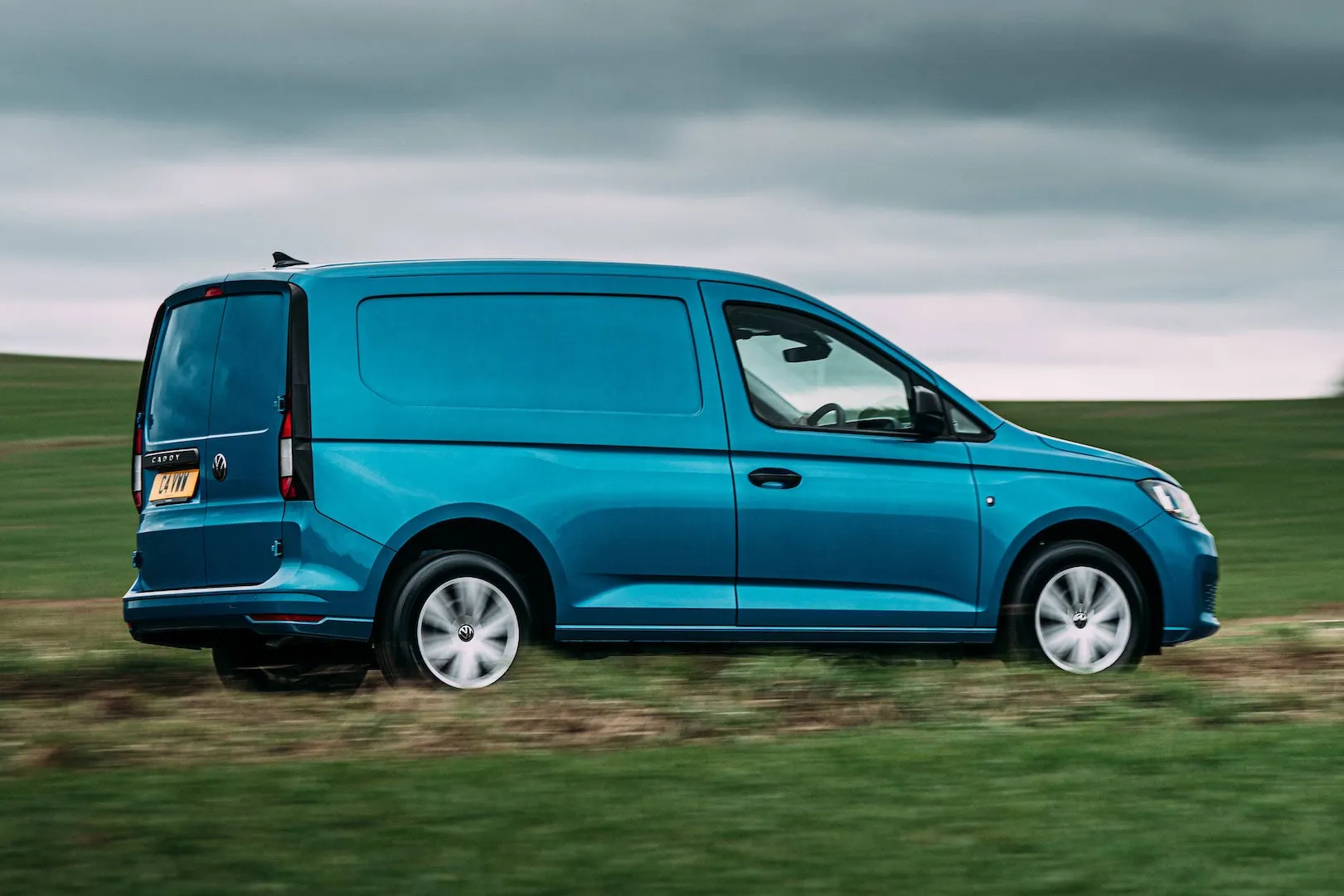
No, you're not going to tackle a twisty B road in a spirited manner (although you can if you really want to), but you're not going to be holding up traffic either.
An advantage of a van of this size is its relatively compact dimensions compared to bigger alternatives like the Volkswagen Transporter or Ford Transit Custom. That means it will fit under height barriers and reversing it into a supermarket car parking space shouldn't bring you out in a cold sweat.
There's lots of technology on hand to make things a bit easier. Mid-level Commerce Plus models get reversing sensors as standard, while the top-spec Commerce Pro gets them at the front, too. The Tech Pack's a desirable extra – not only for the rear-view camera, but also for the adaptive cruise control (on the Commerce Pro).
Gone are the old cart springs fitted to the previous Caddy. The new model uses coil springs, like a car, and it skips over bumpy road surfaces quite happily. Whether you're driving a fully-loaded Caddy or running around load-free, it really does feel like a car in terms of ride comfort.
What engines and gearboxes are available in the Volkswagen Caddy Cargo?
The Caddy Cargo is initially offered with the 2.0-litre TDI diesel engine with a variety of outputs: 75PS, 102PS and 122PS.
All three are available with a six-speed manual transmission while the more powerful units can also be paired with a seven-speed DSG transmission. We've tried the 122PS version with the DSG gearbox and, budget allowing, it's a very desirable choice – with plenty of torque meaning you won't have to work the engine particularly hard, even with a van full of whatever it is you wish to transport.
The auto gearbox is impressive, with surprisingly rapid changes, although there is a slight hesitation when pulling away from a standstill (a trait of dual-clutch transmissions like this).
For Caddy drivers looking to cover a lot of short journeys or town driving, Volkswagen also offers its popular 1.5 TSI petrol engine. We've tried this in the Caddy MPV and it certainly shouldn't leave you longing for a diesel. It's more than powerful enough, and considerably quieter than the TDI. It's also surprisingly efficient, thanks partly due to cylinder-deactivation tech which shuts off two of the engine's four cylinders as often as possible.
Refinement and noise levels
Like most vans, you'll have to adjust your expectations a bit when it comes to noise levels in the Caddy. Don't expect Volkswagen Golf refinement, although it's no less relaxing to drive than rivals like the Toyota Proace City.
It's road noise that's most noticeable – with a clear thrum from the tyres, particularly at motorway speeds. It might get weary over long journeys, although it's a step up compared to its predecessor. If you'd consider a van-based people carrier, the Volkswagen Caddy MPV is noticeably quieter.
Safety equipment: How safe is the Volkswagen Caddy Cargo?
While vans traditionally do without some of the clever technology available on passenger cars, Volkswagen has kitted the Caddy Cargo out with no fewer than nineteen driver assistance systems – including six brand new for the fifth-generation van.
These include the clever Trailer Assist system, which will automatically manoeuvre the van and trailer during parallel and reverse parking. Adaptive cruise control will take the pain out of a long journey, while Front Assist will detect pedestrians, cyclists and other vehicles – applying the brakes if required to prevent (or reduce the impact of) a collision.
Unfortunately, you'll have to be prepared to pay for most of these features. Many are lumped into a driver assistance pack, which is a very desirable (but not cheap) optional extra available on Commerce Plus and Commerce Pro models.
All models do come with some useful safety features, though. The Front Assist, for example, is standard, as well as an eCall emergency system that can dial 999 if it detects a crash.
MPG and fuel costs: What does a Volkswagen Caddy Cargo cost to run?
"Frugal van drivers should look at one of the diesel Caddy Cargo models. The lower-powered 2.0-litre TDIs are the most efficient, capable of up to 57.6mpg with the manual gearbox."
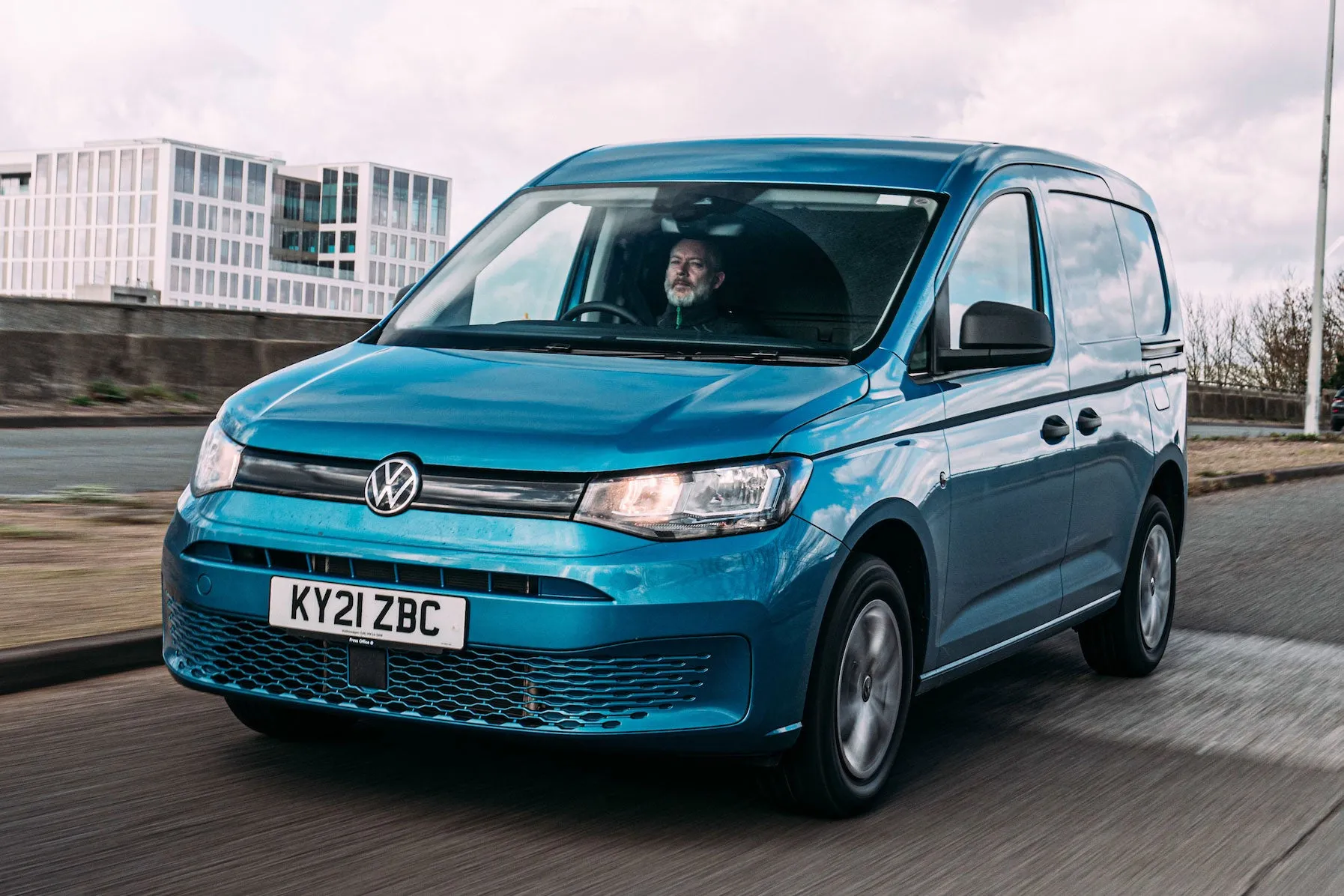
You'll pay a small fuel economy penalty by choosing a Caddy Cargo with the seven-speed DSG gearbox. Capable of up to 54.3mpg, it's a small price to pay for the luxury of an automatic transmission.
The 1.5 TSI petrol is, naturally, thirstier. It's still officially capable of 44.1mpg, though, which shouldn't break the bank – particularly if you use your van for lots of short journeys or urban deliveries. If you want a truly eco runaround, you'll have to wait for the upcoming ID Buzz Cargo electric van.
VED car tax: What is the annual road tax on a Volkswagen Caddy Cargo?
You'll play a flat rate of £275 a year to tax a Caddy Cargo. This is the same as rivals, apart from electric models which qualify for free road tax.
How much should you be paying for a Volkswagen Caddy Cargo?
"As the Caddy Cargo is such a new model, the market isn't exactly flooded with used or nearly-new examples. If you do want to buy a van urgently, though, there are selected dealers with pre-registered or ex-demonstrator vehicles on the forecourt today."
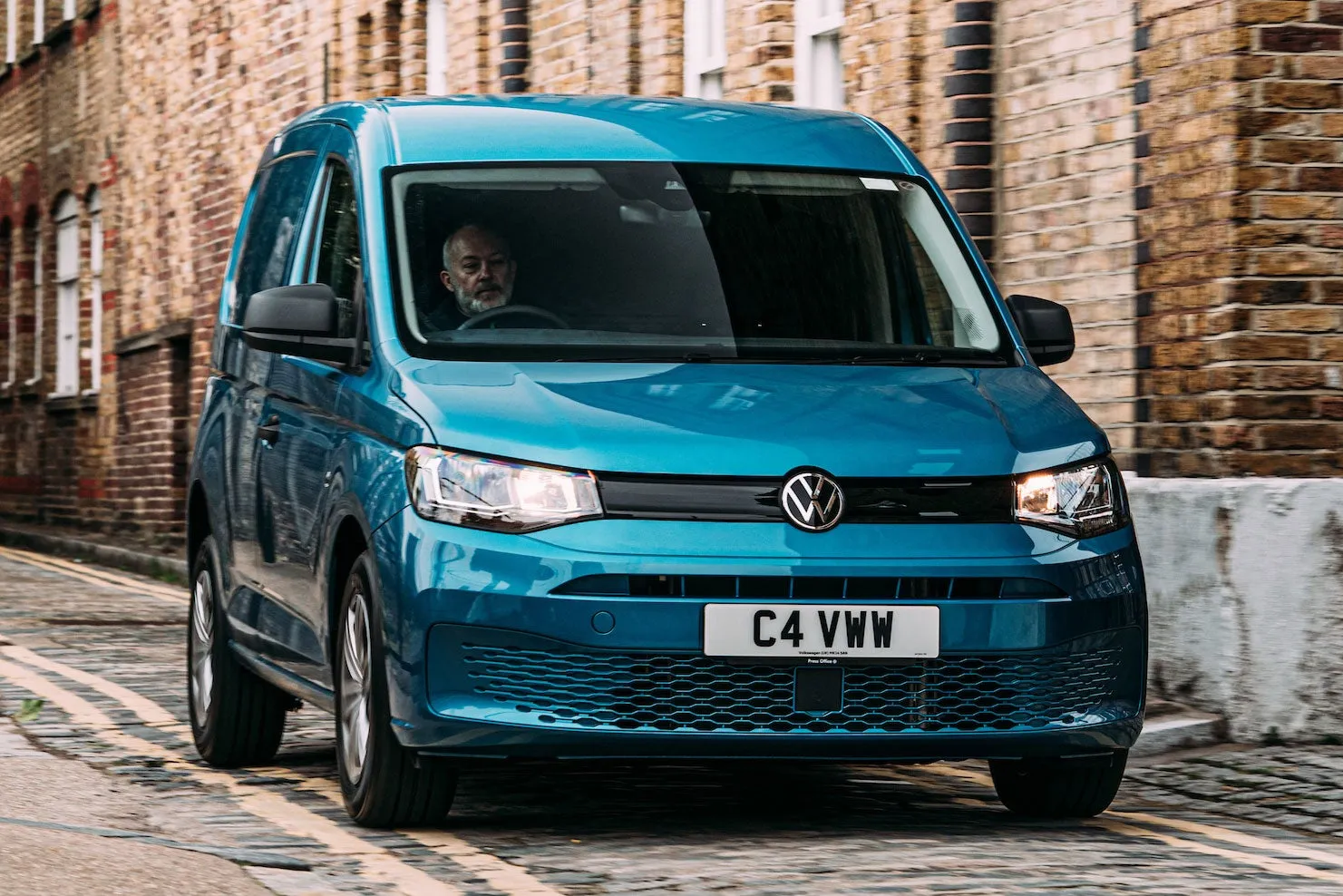
A budget of £22,000 (before VAT) will get you a SWB Commerce Plus with the 102PS 2.0 TDI or 1.5 TSI engine, while a Commerce Pro could be yours from around £23,000.
Towards the top end of the market, you could be paying close to £30,000 for a Commerce Pro with a few desirable options, including the more powerful diesel engine and DSG automatic gearbox. That's a considerable chunk of money for a van of this size, but the Caddy traditionally retains its value prety well.
Trim levels and standard equipment
The Volkswagen Caddy Cargo line-up is split into three main trim levels: Commerce, Commerce Plus and Commerce Pro.
The entry-level Caddy Cargo will appeal to those looking for a basic van without too many thrills. Standard equipment includes 16-inch steel wheels (17-inch on the Maxi), black exterior highlights and halogen headlights. There's a 6.5-inch touchscreen display in the cabin along with DAB radio and two USB slots. Cruise control (with a speed limiter) is standard, as well as an electronic parking brake with auto-hold function. There are electric front windows, a lockable glovebox and manual height adjustment for the front seats.
Standard safety kit includes a driver alert system, brake assist and an automatic post-collision braking system. Regenerative braking is on hand to boost efficiency, as well as a stop-start system.
Highlights of the Caddy Cargo Commerce Plus include body-coloured bumpers, rear parking sensors and air conditioning. There's a leather-trimmed steering wheel, an armrest for the driver and manual height adjustment for both seats, while the driver gets adjustable lumbar support.
The Volkswagen Caddy Cargo Commerce Pro adds quite a long list of nice-to-haves. These include 16- or 17-inch alloy wheels, power-folding (and heated) exterior door mirrors and body-coloured exterior highlights. You get LED rear tail lights, parking sensors (front and rear) while, on the inside, you'll find a 10-inch media system (with navigation) and an armrest for the driver's and passenger's seat.
Ask the heycar experts: common questions
What is a Volkswagen Caddy Cargo?
What is the new Volkswagen Caddy Cargo based on?
How much is a new Volkswagen Caddy Cargo?
Get our latest advice, news and offers
Keep me updated by email with the latest advice, news and offers from heycar.
By submitting you agree to our privacy policy
